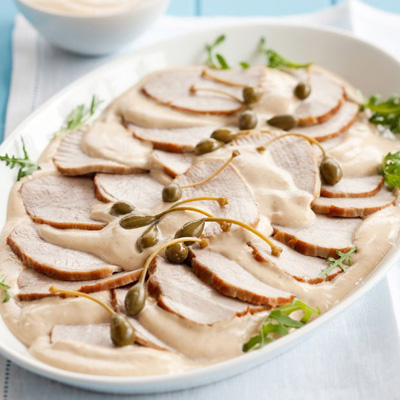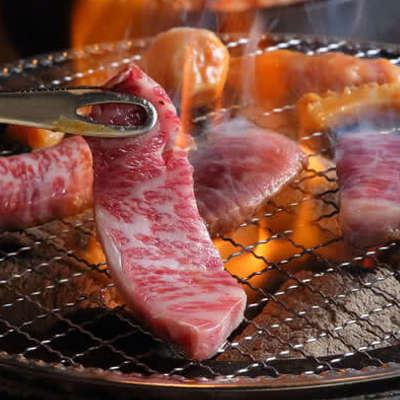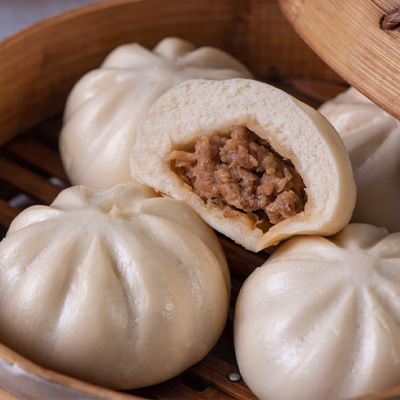Mochi is a delectable Japanese treat with a history as rich as its flavor. In this comprehensive guide, we'll take you on a journey through the fascinating world of mochi. From its origins to how it's made, and the various ways it's enjoyed, this article is your gateway to understanding and savoring this beloved Japanese delicacy.
Nutrition Facts
- Kcal
50 - Fat
0 g - Choles
0 mg - Sodium
0 mg - Carbs
13 g - Fiber
0 g - Sugar
4 g - Protein
0 g
Note: The nutrition facts are approximate values and may vary based on the specific ingredients used and any additional toppings or syrups added.
Ingredients
- 1 cup glutinous rice flour
- 1/4 cup granulated sugar
- 1 cup water
- 1/4 cup cornstarch or potato starch, for dusting
- Red bean paste, fruit, or ice cream for filling (optional)
Directions
- In a microwave-safe bowl, combine the glutinous rice flour and granulated sugar. Mix well.
- Gradually add the water to the flour-sugar mixture, stirring continuously to create a smooth batter.
- Cover the bowl with plastic wrap or a microwave-safe plate.
- Microwave the mixture on high for 1 minute.
- Remove the bowl from the microwave and stir the mixture. It should be thickening but still a bit runny.
- Cover the bowl again and microwave for another 1 minute.
- Remove the bowl and stir the mixture again. It should now be a sticky, stretchy dough.
- Allow the dough to cool slightly, so it's safe to handle.
- Dust a clean surface and your hands with cornstarch or potato starch.
- Scoop a small portion of the mochi dough, about the size of a walnut, onto the dusted surface.
- Flatten the dough with your hands or a rolling pin into a circle.
- If desired, place a small amount of red bean paste, fruit, or ice cream in the center of the circle.
- Gather the edges of the circle to enclose the filling and shape it into a ball or cube. Pinch to seal the seams.
- Repeat the process with the remaining dough and filling.
- Your homemade mochi is ready to serve. Enjoy!
A Bite-Sized History
Ancient Origins
Mochi's roots can be traced back over a thousand years to ancient Japan, where it was considered a sacred food offering.
Traditional Mochitsuki
Discover the traditional method of making mochi, known as mochitsuki, which involves pounding glutinous rice into a sticky, elastic dough.
Mochi Throughout the Year
Learn how mochi plays a central role in various Japanese celebrations, including New Year's festivities and festivals like Hinamatsuri and Children's Day.
Crafting Mochi
The Key Ingredient
Uncover the secret behind mochi's chewy texture: glutinous rice, also known as mochigome.
Modern Methods
Explore contemporary mochi-making techniques that have evolved from the traditional mochitsuki.
Flavorful Fillings
Mochi comes in various flavors and fillings, from classic red bean paste to innovative options like ice cream.
Mochi in Japanese Culture
Symbolism and Tradition
Delve into the symbolism of mochi in Japanese culture, where it represents unity, good fortune, and family ties.
Mochi in Art and Literature
See how mochi has inspired Japanese art, literature, and even pop culture.
Mochi Around the World
Learn how this Japanese delight has gained international recognition and has become a favorite treat worldwide.
Savoring Mochi
Traditional Treats
Discover classic mochi treats like daifuku and mitarashi dango, as well as regional variations.
Modern Twists
Experience mochi's versatility in contemporary dishes like ice cream mochi and mochi-wrapped sushi.
DIY Mochi
Want to try making mochi at home? We'll provide a simple recipe for homemade mochi that you can enjoy with your favorite fillings.
FAQs
What does mochi taste like?
A: Mochi has a subtly sweet and neutral flavor with a pleasantly chewy texture.
Is mochi gluten-free?
A: While mochigome (glutinous rice) is naturally gluten-free, cross-contamination can occur, so it's essential to choose certified gluten-free mochi products if you have a gluten sensitivity.
Can I store mochi, and for how long?
A: Yes, you can store mochi in an airtight container at room temperature for a few days or in the refrigerator for up to two weeks. You can also freeze mochi for an extended shelf life.
What are some creative mochi fillings to try?
A: Experiment with fillings like matcha cream, taro paste, or even savory options like cheese and bacon.
How is mochi different from regular rice cakes?
A: Mochi is made from glutinous rice, which gives it its distinctive chewy texture, whereas regular rice cakes are made from non-glutinous rice and have a different, less elastic consistency.
Is mochi safe to eat for vegetarians and vegans?
A: It can be, but it's essential to check the ingredients, as some mochi fillings may contain dairy products or other animal-derived ingredients.
The Joy of Mochi
Mochi is more than just a Japanese sweet; it's a symbol of tradition, celebration, and culinary artistry. Whether you're savoring its chewy goodness during a festival or trying your hand at making it at home, mochi's versatility and rich history make it a delightful treat for all occasions.













